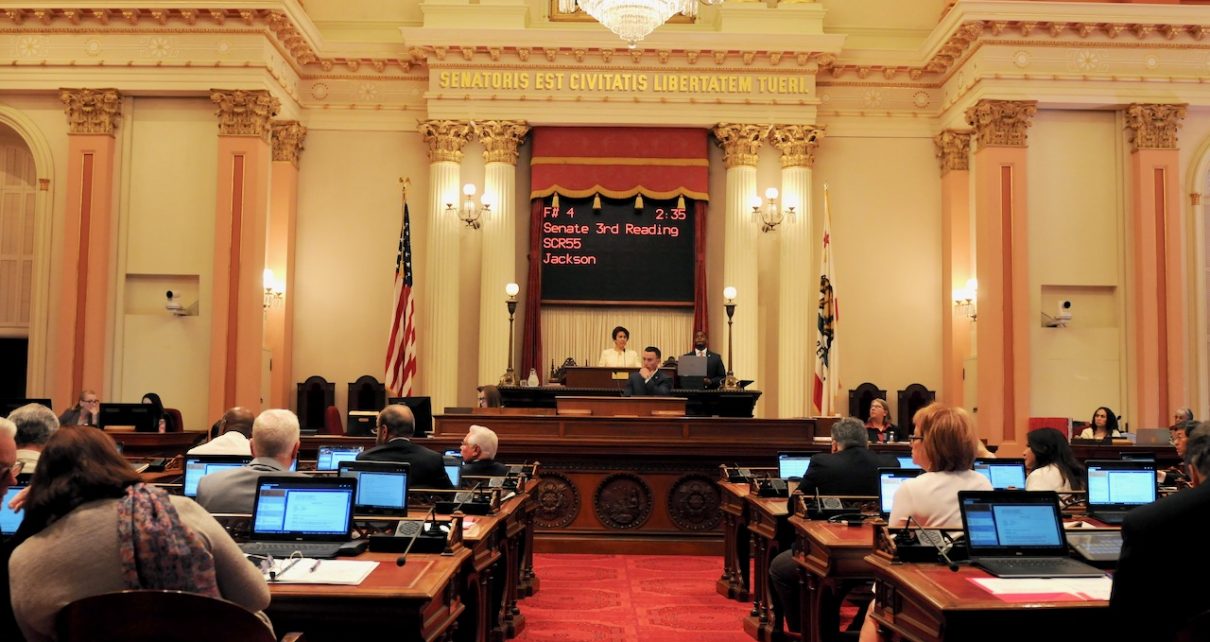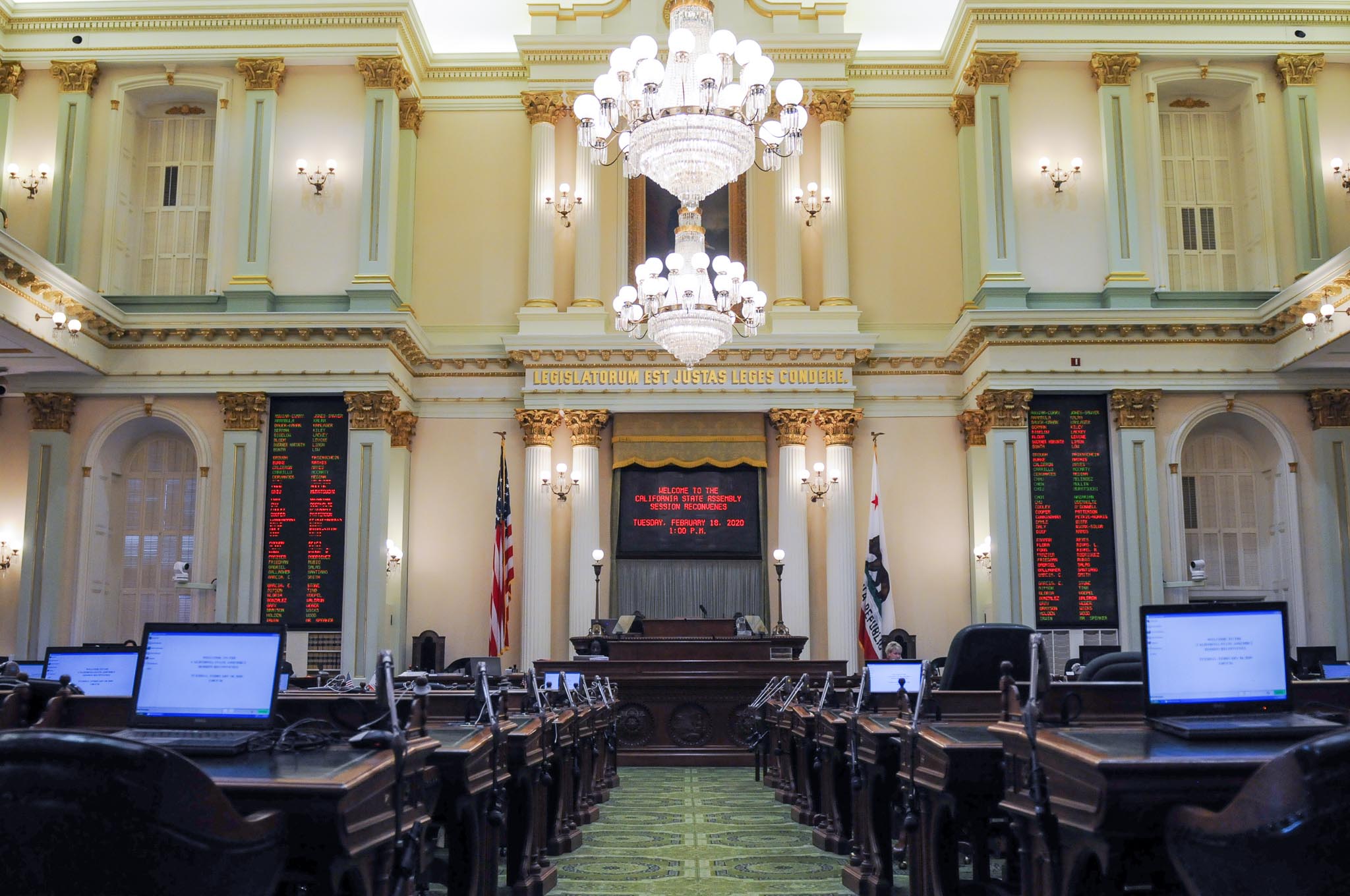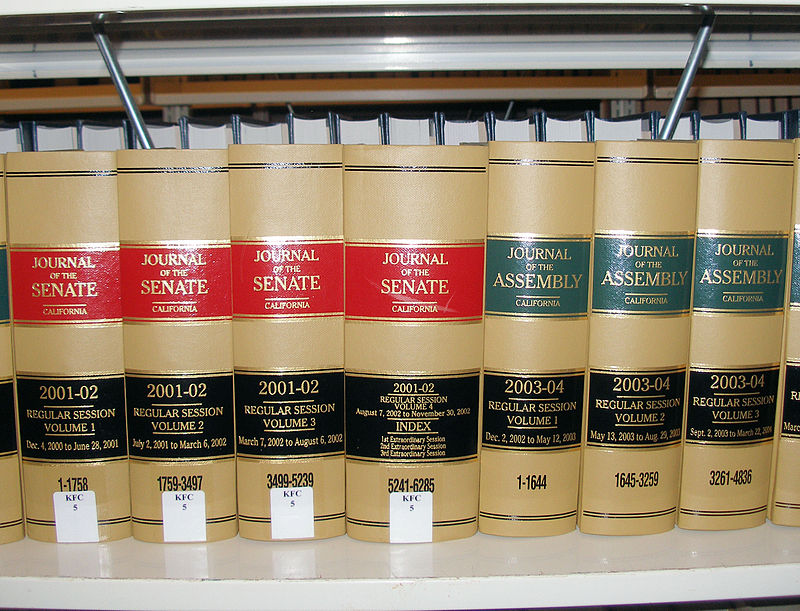
California State Senate. (Photo: Kevin Sanders for California Globe)
How Is a Bill ‘In Print’ When It Will Be Amended Days Later?
The practice ensures that the public is aware of the bill’s amendments
By Chris Micheli, August 28, 2022 8:08 am
Those closely monitoring the California Legislative Information website (found at https://leginfo.legislature.ca.gov/) during the final weekend before the Legislature adjourns in 2022 Session found an interesting phenomenon: Senate Bills were posted with amendments, but readers saw the following at the top of the bill:
AMENDED IN ASSEMBLY AUGUST 29, 2022
However, at the top, right hand corner, it specifies:
Date Published: 08/27/2022 09:52 AM
How could that be? How was a bill “in print” before it was actually amended?
This unique circumstance began when Prop. 54 took effect. Proposition 54, which was enacted by the voters at the November 2016 general election, adopted constitutional and statutory changes dealing with bill amendments and recordings of legislative proceedings. According to the Attorney General’s Ballot Summary, Prop. 54:
Prohibits Legislature from passing any bill unless published on Internet for 72 hours before vote. Requires Legislature to record its proceedings and post on Internet. Authorizes use of recordings. Fiscal Impact: One-time costs of $1 million to $2 million and ongoing costs of about $1 million annually to record legislative meetings and make videos of those meetings available on the Internet
The proponents of Prop. 54 were specifically concerned with “gut-and-amend” bills that contain “last-minute amendments to bills [that] are frequently used to push through political favors without comment or with little advance notice. Moreover, complex bills are often passed before members of the Legislature have any realistic opportunity to review or debate them, resulting in ill-considered legislation.”
As a result of Prop. 54, Article IV, Section 8(b)(2) was amended to provide, in part (additions are in italics):
(2) No bill may be passed or ultimately become a statute unless the bill with any amendments has been printed, distributed to the members, and published on the Internet, in its final form, for at least 72 hours before the vote, except that this notice period may be waived if the Governor has submitted to the Legislature a written statement that dispensing with this notice period for that bill is necessary to address a state of emergency, as defined in paragraph (2) of subdivision (c) of Section 3 of Article XIII B, that has been declared by the Governor, and the house considering the bill thereafter dispenses with the notice period for that bill by a separate rollcall vote entered in the journal, two thirds of the membership concurring, prior to the vote on the bill.
As a result, the “final form” of bills must be in print for 72 hours (not 3 days!) before they can be voted upon by legislators on the Floors of the State Assembly and State Senate.
So, how do the two houses of the California Legislature handle floor amendments? In the State Assembly, amendments are due to the Assembly Desk prior to them being taken up (by the bill’s floor manager), presented (to the body), and voted upon (by the Members, usually by unanimous consent; otherwise, by a majority of those present and voting).
Therefore, in the Assembly, the amendments made over the weekend will simply be adopted, usually by voice vote, at the Floor Session on Monday, August 29. As a result, the bills “in print” on the California Legislative Information website set forth an official amendment date of August 29.
However, for purposes of complying with the requirement of Prop. 54 that the bill be in print for 72 hours before it can be voted on by the body, the website also sets forth the date and time stamp (i.e., when the bill, in its amended form, was publicly posted for all readers to see). Hence, the clock begins ticking on the 72-hour in print rule one the bill, in its amended form, has been posted on the California Legislative Information website.
On the other hand, the Senate simply processes the amendments on the day they are received. In other words, on Saturday, August 27, two Assembly Bills (AB 152 and AB 156) were amended. The Senate Desk processed those amendments that day. The bills, in their amended form, were then posted on the California Legislative Information website.
As a result, at the top of those two bills, it specifies:
AMENDED IN SENATE AUGUST 27, 2022
At the top, right hand corner, it specifies:
Date Published: 08/27/2022 10:36 AM
So, this anomaly of bills being “in print” in the Assembly before they are actually amended on the Floor is simply the method used to comply with the requirements of Prop. 54. The practice ensures that the public is aware of the bill’s amendments and its new content in advance of the Assembly voting on the amended measure.
- Statewide Child Support Registry - January 2, 2026
- Foreign Country Money Judgments - January 2, 2026
- How Many Bills Are on the Inactive Files? - January 1, 2026




